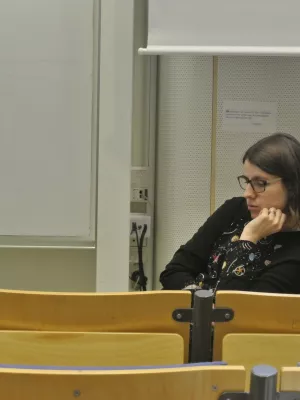
Sanna Alwmark
Postdoc

The Complex Exhumation History of Jezero Crater Floor Unit and Its Implication for Mars Sample Return
Författare
Summary, in English
During the first year of NASA's Mars 2020 mission, Perseverance rover has investigated the dark crater floor unit of Jezero crater and four samples of this unit have been collected. The focus of this paper is to assess the potential of these samples to calibrate the crater-based Martian chronology. We first review the previous estimation of crater-based model age of this unit. Then, we investigate the impact crater density distribution across the floor unit. It reveals that the crater density is heterogeneous from areas which have been exposed to the bombardment during the last 3 Ga to areas very recently exposed to bombardment. It suggests a complex history of exposure to impact cratering. We also display evidence of several remnants of deposits on the top of the dark floor unit across Jezero below which the dark floor unit may have been buried. We propose the following scenario of burying/exhumation: the dark floor unit would have been initially buried below a unit that was a few tens of meters thick. This unit then gradually eroded away due to Aeolian processes from the northeast to the west, resulting in uneven exposure to impact bombardment over 3 Ga. A cratering model reproducing this scenario confirms the feasibility of this hypothesis. Due to the complexity of its exposure history, the Jezero dark crater floor unit will require additional detailed analysis to understand how the Mars 2020 mission samples of the crater floor can be used to inform the Martian cratering chronology.
Avdelning/ar
- Berggrundsgeologi
Publiceringsår
2023
Språk
Engelska
Publikation/Tidskrift/Serie
Journal of Geophysical Research: Planets
Volym
128
Issue
6
Dokumenttyp
Artikel i tidskrift
Förlag
Wiley-Blackwell
Ämne
- Geosciences, Multidisciplinary
Nyckelord
- crater chronology
- Mars
Status
Published
ISBN/ISSN/Övrigt
- ISSN: 2169-9097

